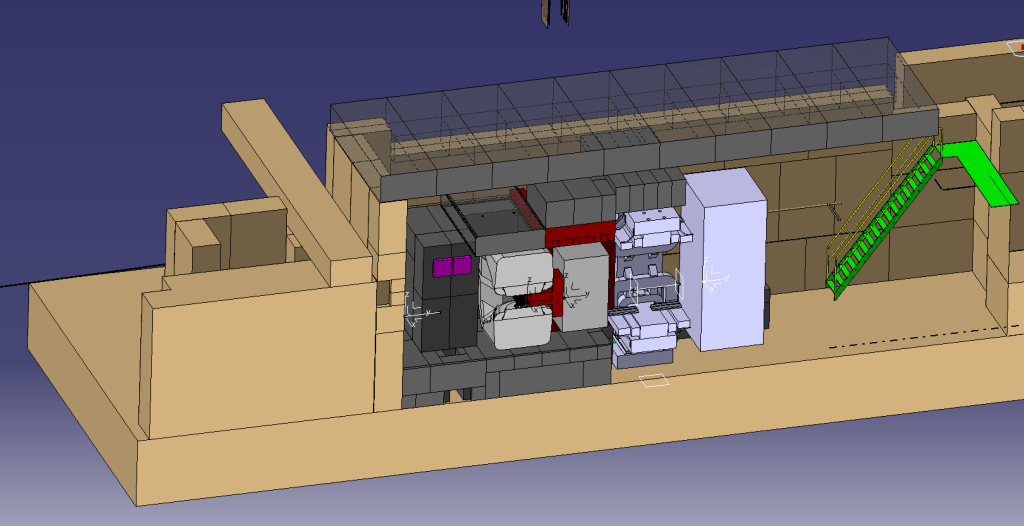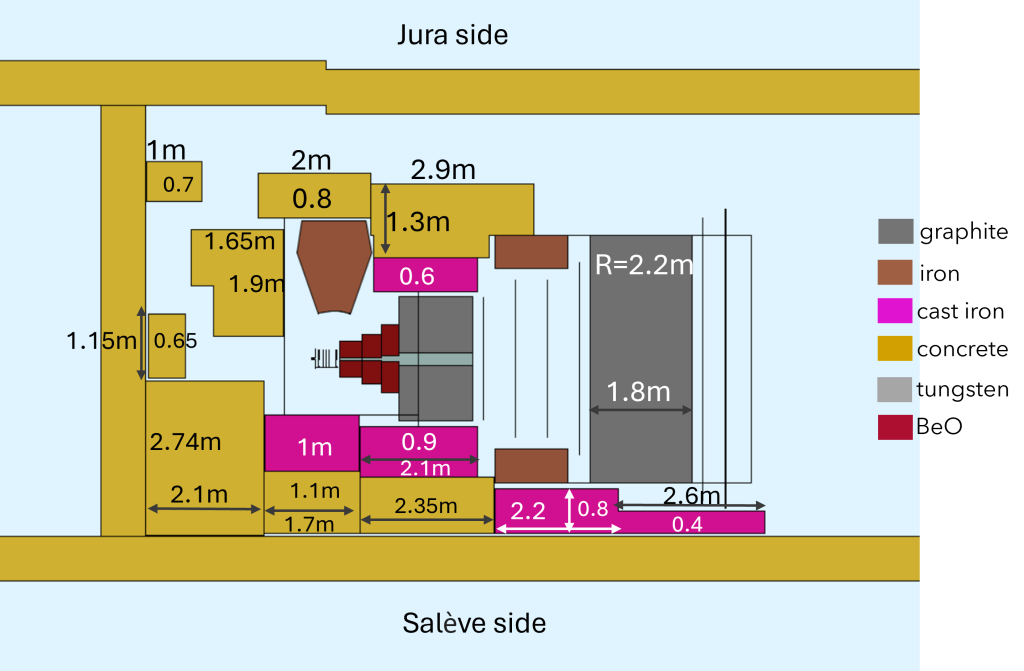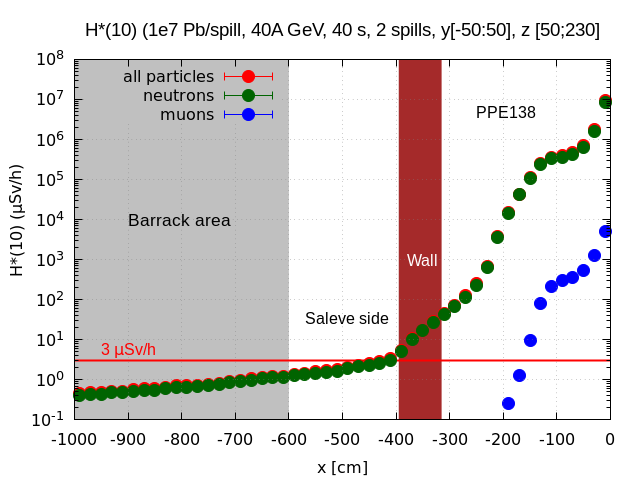More details can be found in Chapter 2.8 and 3 of the proposal
The selected location for the experiment is the zone PPE138, on the H8 beam line of the CERN SPS, in the EHN1 surface area.
The physics program of the experiment requires a large heavy-ion luminosity, of the order of 10^12 Pb ions on a 15% interaction probability Pb target for each energy point. To reach this goal, beam intensities of the order of 10^7 Pb/spill must be reached. In addition, the beam needs to be focused to a sub-mm size. Careful optics studies, confirmed by test beam results with a 150 A GeV Pb beam, carried out in 2024 with the nominal beam intensity foreseen, allowed verifying this goal. The plot shows the Pb beam spot, measured by a telescope of ALPIDE Si detector. The size of the beam (1 sigma) is 0.207×0.098 mm2.

The experiment also needs a proton beam, to build a reference for Pb-Pb studies. A similar integrated luminosity per nucleon-nucleon collision is needed. The required beam intensity of ~5×10^8 protons/spill can be reached by using primary low-energy beams from the SPS. The technical aspects connected with this choice are currently investigated.
Detailed integration studies were first carried out in 2020-2021 by the CERN-EA group (A. Gerbershagen et al., NIM A 1047 (2023) 167887 (link)) and were reported in the LoI. Following the evolution of the set-up (with the inclusion of the existing MNP33 dipole for the muon spectrometer, replacing the originally proposed but still-to-be-built toroid), these studies were updated and are reported in the experiment proposal. In the figure below, a view of the experiment as to be installed in PPE138.

Due to the high beam intensity, careful radio-protection studies are an essential requisite. An appropriate screening of the experimental zone was designed by the HSE-RP group, to bring the dose, externally to the zone, to <3μSv/h is shown in the following figure.

The prompt ambient dose equivalent rate in muSv/h is shown in the following figure. It refers to collisions of a 40 A GeV Pb beam on the NA60+/DiCE Pb target. The values are averagedvertically over 1 m around the beam axis and longitudinally over 1.8 m corresponding to a location downstream of the target, where dose rates reach the highest values.
